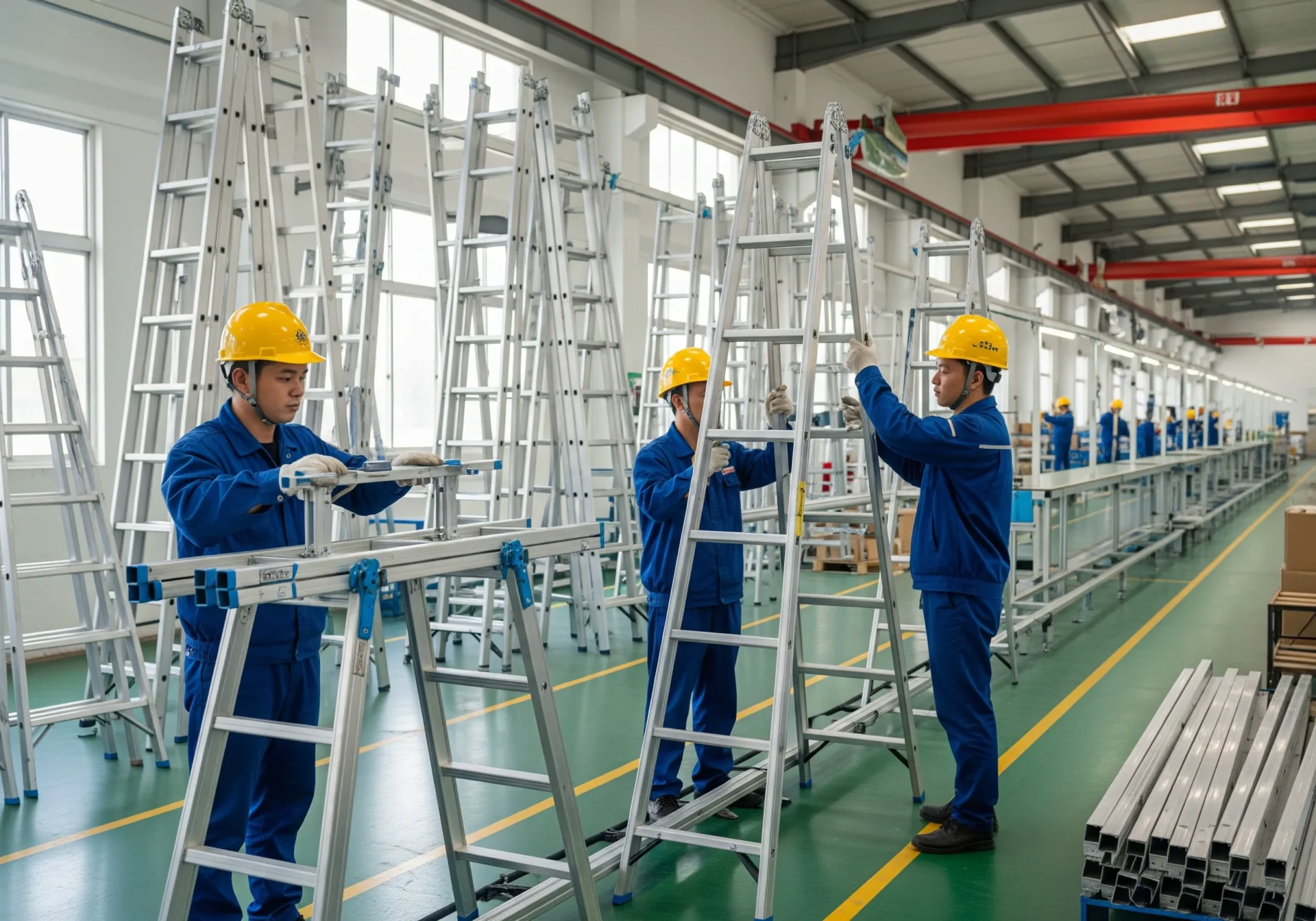Introduction
Ladders and stepladders produced at overseas manufacturing sites offer advantages in terms of cost and supply, but they also present challenges in ensuring quality and safety. Accident statistics from both Japan and abroad (according to NITE, there were 189 incidents between FY2006 and FY2010) show that a majority of falls and injuries are due to misuse or carelessness. To maintain safety on-site, thorough management from the product stage is essential. This article, from the perspective of “quality control standards for ladders and stepladders,” will specifically explain the key points, standards, and the importance of process management that must be addressed in overseas manufacturing.
The Reality and Background of Accidents
According to statistics from NITE (National Institute of Technology and Evaluation), a total of 189 accidents related to ladders and stepladders occurred in the five years from FY2006 to FY2010. Of these, there were 11 fatal accidents, 72 serious injury accidents, and 97 minor injury accidents. The main causes of accidents include losing balance and falling during work, falling while ascending or descending, and setting up on unstable surfaces. Notably, cases attributed to “misuse or carelessness” account for 64% of the total. These facts indicate that in addition to ensuring safety during the design and manufacturing stages, it is crucial to disseminate and educate on the correct usage methods at the worksite.
Source: NITE (National Institute of Technology and Evaluation), Product Safety Center
International and Domestic Quality Standards and Certification Systems
To guarantee the safety and quality of ladders and stepladders, understanding and complying with international and domestic standards and certification systems is essential. A representative example is the “JIS Mark (JIS S1121, etc.),” where a registered certification body examines product testing and quality management systems based on the Industrial Standardization Act. This contributes to ensuring compatibility and safety and is also valid for public procurement. Next is the “SG Mark (CPSA standards),” which is granted to products that conform to standards set by the Consumer Product Safety Association; a relief system is applied in the event of personal injury accidents due to defects. Furthermore, there is the “A Mark,” which is based on voluntary standards established by the Ladder and Stepladder Division of the Japan Light Metal Products Association. It has a broader scope of application than JIS or SG and is awarded after examining the product’s test results. These certification marks differ in their target products, scope of application, and safety assurance content, making them important criteria for selection.
Source: Consumer Product Safety Association SG Mark System
Quality Control Processes at Overseas Manufacturing Sites
To ensure quality in overseas manufacturing, a management system that covers the entire product lifecycle is required. First, at the material procurement stage, the conformity of aluminum alloys to standards and their corrosion resistance are confirmed, and quality certificates for each lot are obtained. Next, in the manufacturing process, quality gates are established for important processes such as dimensional accuracy, welding quality, and surface finish to create a system that prevents non-standard products from being released. Furthermore, for finished products, load tests, durability tests, and opening/closing operation tests are conducted to verify that they meet the specified performance. Finally, a pre-shipment final inspection confirms the appearance, function, and safety labeling. Ensuring traceability through lot management enables a swift response in the event of a defect.
Source: JIS Mark Display System (Japanese Industrial Standards Committee)
Key Points in Design and Manufacturing to Enhance Safety
To enhance product safety, it is essential to consider durability and stability from the design stage. For example, the top plate structure and locking mechanism must have sufficient strength to withstand wear and impact from repeated use. Additionally, anti-slip processing should be appropriately applied to the stiles and rungs to improve the stability of the worker’s footing. In overseas manufacturing, defects such as cracks in stiles and broken metal fittings have been reported; these can be prevented by strengthening material selection, processing accuracy, and inspection processes. Furthermore, it is important to comply with relevant laws and regulations, such as the Ordinance on Safety and Health for Work at Heights, at each stage of design and manufacturing to ensure both on-site safety and avoidance of legal risks.
Source: Ministry of Health, Labour and Welfare, Ordinance on Safety and Health for Work at Heights
On-site Operation, Education, and Feedback
To ensure safe operation on-site, it is essential to devise ways for anyone to understand how to use the product. User manuals should be made multilingual, including local languages, with content that is easy for workers from different cultures and customs to understand. To prevent misuse, pictograms that can be understood intuitively should be used in addition to text to visually indicate important precautions. Furthermore, potential risks can be reduced by systematically collecting and analyzing accident and near-miss incidents that occur on-site and running an improvement cycle. This information should be promptly shared with overseas manufacturing sites and reflected in the improvement of design and manufacturing processes, thereby establishing a feedback loop that enhances safety globally.
Conclusion
To protect the safety and quality of ladders and stepladders at overseas manufacturing sites, the foundation of accident prevention is to first comply with established international and domestic quality standards and to strictly manage the manufacturing process. Obtaining certification marks such as JIS, SG, and A Mark can enhance product reliability and competitiveness in the market. Furthermore, long-term and sustainable safety can be achieved through on-site education systems, daily operational management, and the continuous implementation of an improvement cycle.

